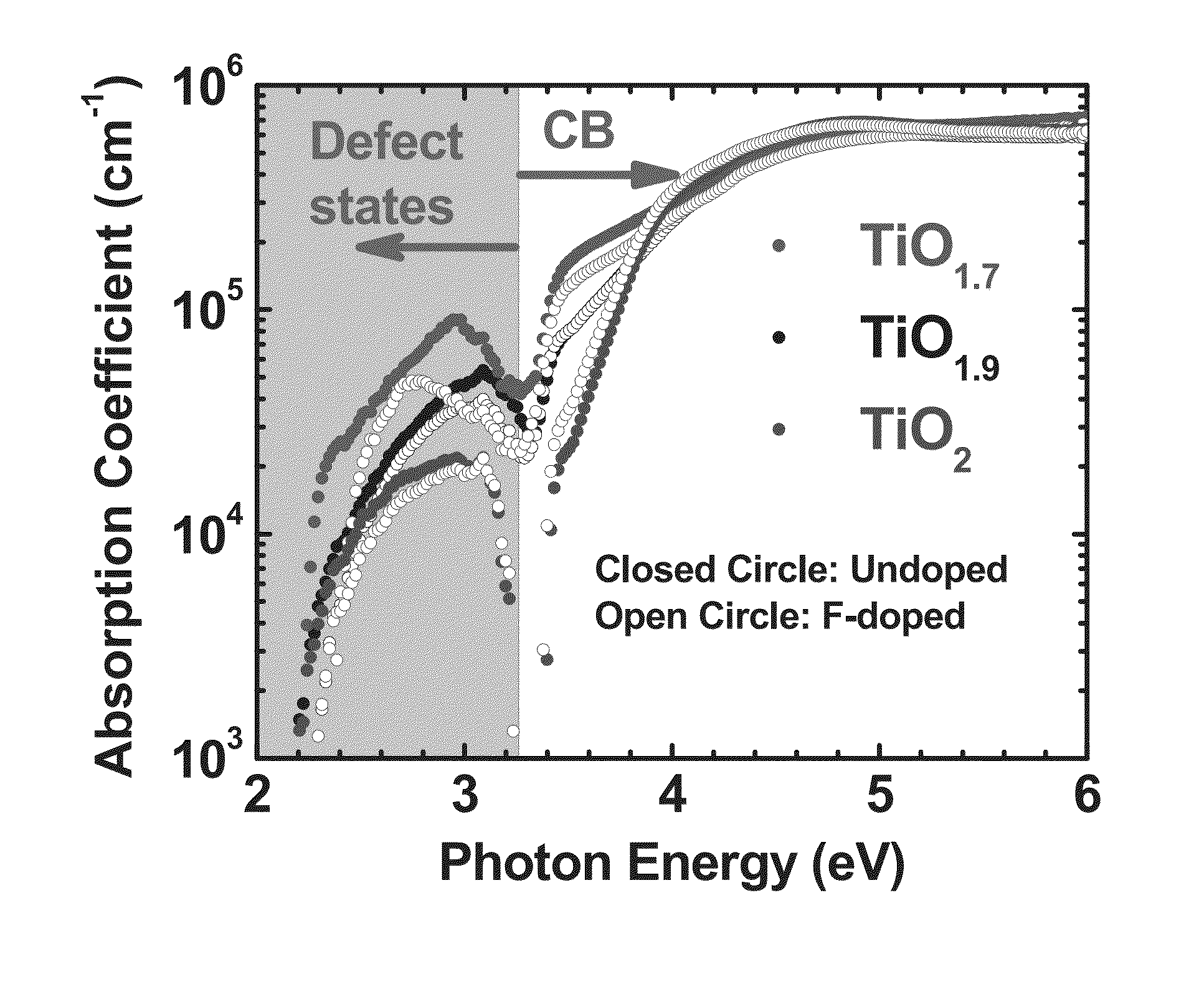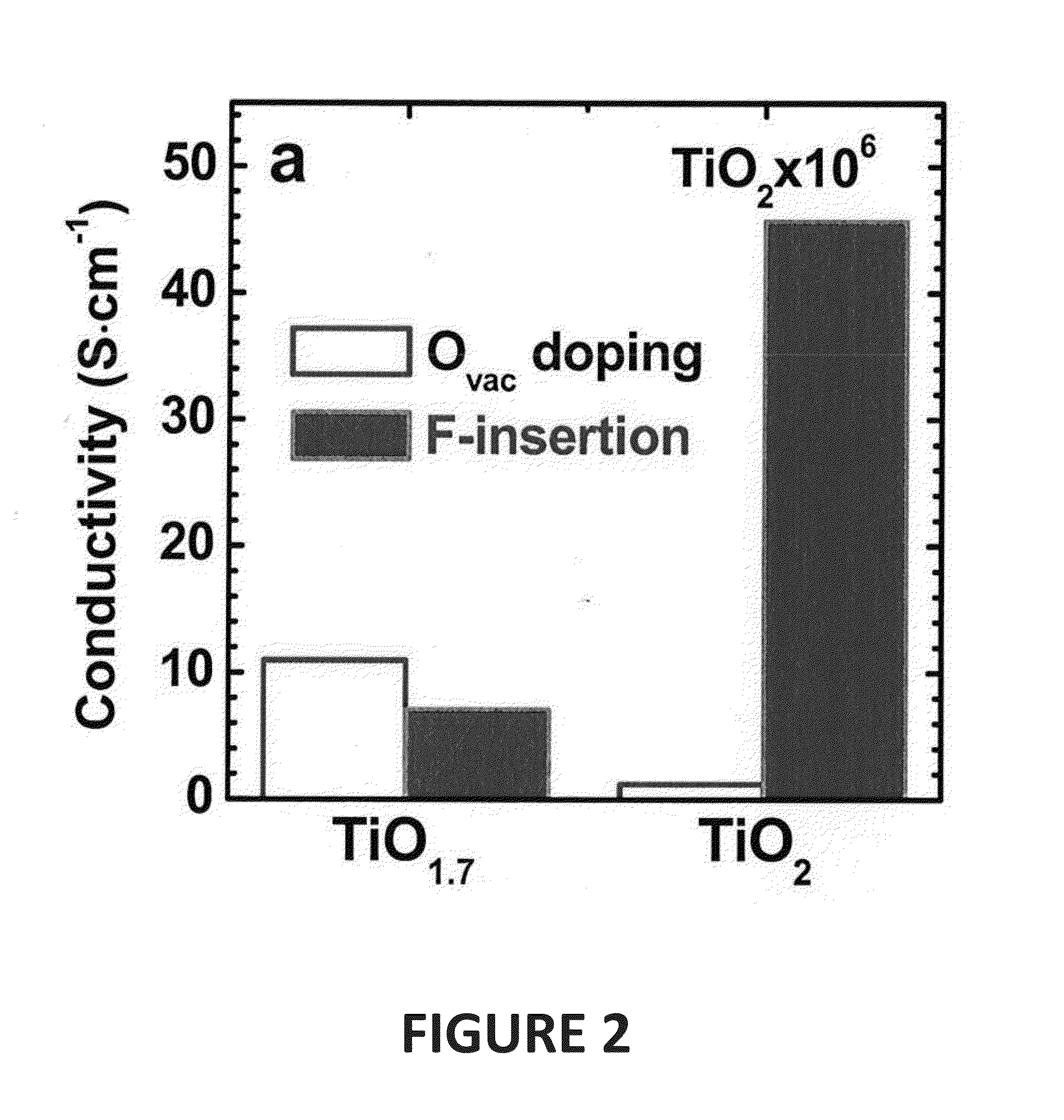Generation of highly N-type, defect passivated transition metal oxides using plasma fluorine insertion
a transition metal oxide and fluorine insertion technology, applied in semiconductor/solid-state device manufacturing, semiconductor devices, electrical equipment, etc., can solve the problems of less stable material, high oxygen deficiency, and less stable material, so as to reduce the over-potential and increase the catalytic reaction rate
- Summary
- Abstract
- Description
- Claims
- Application Information
AI Technical Summary
Benefits of technology
Problems solved by technology
Method used
Image
Examples
Embodiment Construction
[0044]In the discussions that follow, various process steps are described using certain types of manufacturing equipment, along with certain process parameters. It is to be appreciated that other types of equipment can be used, with different pressure and gas concentrations employed, and that some of the steps may be performed in the same chamber without departing from the scope of this invention. Furthermore, different component gases could be substituted for those described herein without departing from the scope of the invention. What is important is that after formation of the TMO film, which will inherently contain O vacancies, the film is further treated in an atmosphere containing F under such conditions as to cause the insertion of fluorine into the deposited film. In one embodiment, especially where a pure transition metal target is used, prior to F insertion, the as-deposited film is first exposed to an oxygen containing atmosphere to reduce the number of O vacancies, in t...
PUM
 Login to View More
Login to View More Abstract
Description
Claims
Application Information
 Login to View More
Login to View More - R&D
- Intellectual Property
- Life Sciences
- Materials
- Tech Scout
- Unparalleled Data Quality
- Higher Quality Content
- 60% Fewer Hallucinations
Browse by: Latest US Patents, China's latest patents, Technical Efficacy Thesaurus, Application Domain, Technology Topic, Popular Technical Reports.
© 2025 PatSnap. All rights reserved.Legal|Privacy policy|Modern Slavery Act Transparency Statement|Sitemap|About US| Contact US: help@patsnap.com



